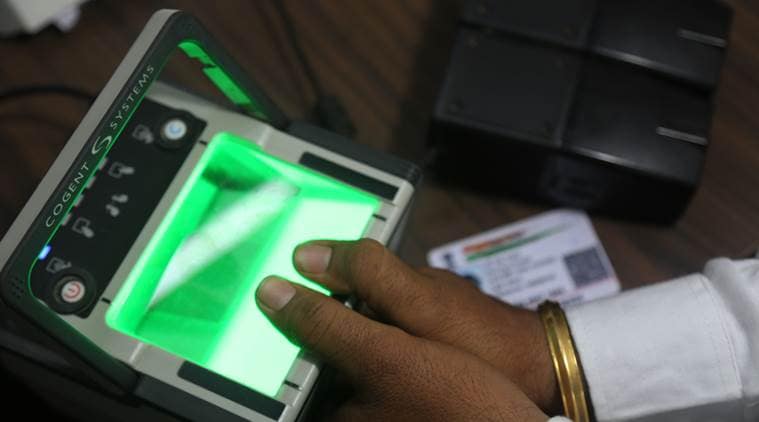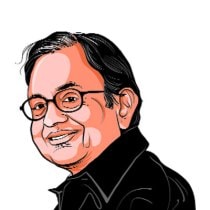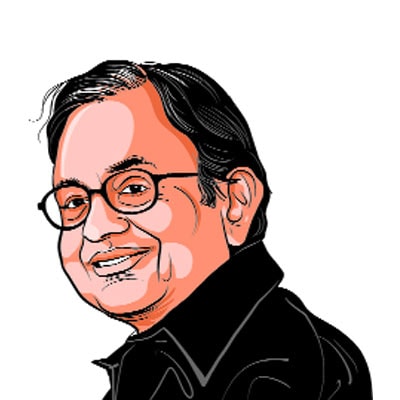Across the Aisle: Good Aadhaar, Bad Aadhaar
The NDA tried to sell the false notion that if a person could not identify himself the person would not have an identity.

Not that the poor did not have an identity. They did — every human being has an identity — but they could not identify themselves, mainly because of their poverty. (Express Photo by Abhinav Saha)
Aadhaar was intended to be a unique identification number. So that, it will not — and cannot — be fabricated, duplicated or misused. Welfare States hand out money, either in the form of cash or benefits. Well-known examples are scholarships, old age and disabled persons’ pensions, subsidy for the LPG cylinder, etc. We found that a private college had ‘ghost’ students on its rolls and claimed scholarships for them. We found that many households had two or more LPG cylinder connections and claimed the subsidy on all cylinders with the connivance of the dealers. We found that LPG dealers had enrolled ‘ghost’ customers, claimed the subsidy, and sold the cylinders to hotels, restaurants and marriage halls.
The other problem was that the poor did not have a reliable method to identify themselves. The worst sufferers were migrant workers, slum dwellers, forest dwellers and people forced to live on the streets. They had no verifiable address, their names were not on the electoral rolls or any other government record, they could not get a ration card or admit their children to a school, and they were at the mercy of the police, municipal and forest officials who treated them roughly as vagabonds and encroachers.
Identity sans Identification
Not that the poor did not have an identity. They did — every human being has an identity — but they could not identify themselves, mainly because of their poverty.
The UPA government recognised the problem and its magnitude. We needed an instrument that would help every individual — if the need arose — to identify herself. And that identification should be acceptable to the provider of the subsidy, benefit or service. Hence the need for an ‘Identification Authority’.
Thus was born the idea of Aadhaar and the Unique Identification Authority of India (UIDAI). Aadhaar was intended to be a benign instrument to help people access subsidies, benefits and services. Any person could obtain an Aadhaar easily and voluntarily. Any person could refuse to obtain an Aadhaar. Enrolment commenced in 2010.
Delivery under the Aadhaar project began in January 2013. It was called the Direct Benefit Transfer (DBT) Scheme. The roll-out was slow and on an experimental basis in a few districts and for a few benefits. Scholarships, welfare payments, LPG subsidies, etc were first brought under DBT. The recipient had to possess an Aadhaar.
Project Surveillance State
A new government took office in May 2014. While in the Opposition, the BJP had stoutly opposed the Aadhaar project. Initially, the BJP-led government was lukewarm to DBT but, as it confessed later, Mr Nandan Nilekani “convinced” the government. I suspect that the government was not persuaded by the technologist Mr Nilekani but by some one else who shrewdly realised the potential of the Aadhaar project to set up a surveillance State.
The NDA tried to sell the false notion that if a person could not identify himself the person would not have an identity. While more subsidies, benefits and services were brought under the project, “function creep” also began. Ministries and Departments were directed to insist on Aadhaar; Aadhaar was mandatorily linked to a number of aspects of daily life. All opposition was brushed aside. By the time the issue reached the Supreme Court, Aadhaar was practically mandatory for the following: Bank accounts, Mobile telephones, Pensions, School admissions, Examinations, Mutual Fund Investments, Insurance policies, Credit cards, Post Office schemes, PPF schemes, Kisan Vikas Patra accounts, Mid-day meal scheme, ICDS, etc.
The Supreme Court called a temporary halt, but the government defied the interim orders. Before the Court, the government justified the wide sweep and the mandatory linkage. It relied upon the law that was passed, fraudulently, as a Money Bill.
Ultimately, the government’s Project Surveillance State has been struck down. Under the Supreme Court’s majority judgment (4:1), the Aadhaar project has been severely circumscribed to “subsidies, benefits and services paid for out of the Consolidated Fund of India”. All other areas have been prohibited; “function creep” has been stopped. For example, Aadhaar cannot be insisted upon for school admissions or bank accounts or mobile telephones or examinations.
Brooding Spirit of Law
On the passage of the law as a Money Bill, the majority, in my view, showed extraordinary judicial forbearance. By reading down one provision and striking down two, the passage of the law as a Money Bill has been upheld. There is a fundamental error in the majority judgment, but that issue has to be reserved for another day and another case.
While the majority judgment is the product of plodding workmanship, the dissenting judgment of Mr Justice Chandrachud will rank among the celebrated dissents of the Court. It is, to borrow the words of Justice Hughes, “an appeal to the brooding spirit of the law, to the intelligence of a future day”. The dissent sets the direction of the Court in the future and holds out hope for those who argued that the current design of Aadhaar was unconstitutional.
Every judgment of the Constitution Benches of the Supreme Court delivered in 2018 has chipped away at tyranny, enlarged the freedom of the people and advanced the cause of Constitutional morality. Project Aadhaar as envisaged by the UPA has been retrieved. The ‘good’ in Aadhaar has been saved. Most of the ‘bad’ in Aadhaar has been identified and consigned to the flames; but there is more. Eternal vigilance is the price of liberty.
or all the latest Opinion News, download Indian Express App
More From P Chidambaram
- Five steps to NirvanaExternal events are impacting the Indian economy. The government is unwilling to alter or calibrate its positions on the projected growth rate, government expenditure, NPA…
- A big ask in election yearThe consequence is that the government revenue has become oil-dependent, government is loath to give up easy revenues, and there is mounting anger among the…
- Across the Aisle: Black to white magicRBI had done no study or preparatory work; yet the Central Board of RBI hurriedly met on November 8, without an agenda and without a…







































No hay comentarios:
Publicar un comentario